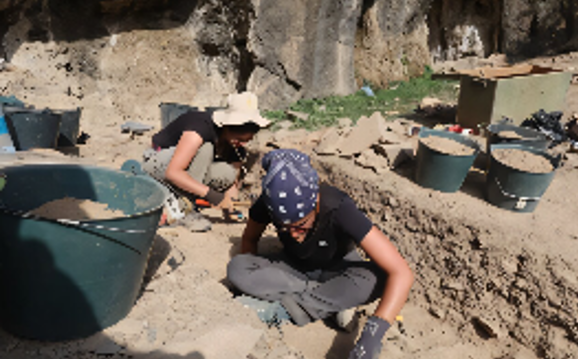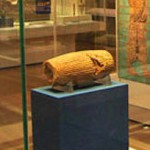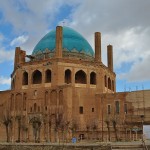 ZERAVSHAN VALLEY, TAJIKISTAN—Haaretz reports that a team of archaeologists from the National Academy of Sciences of Tajikistan and Hebrew University excavated a rock shelter in Tajikistan’s Zeravshan Valley. The researchers have found it was inhabited by perhaps three different human species from the Middle to the Upper Paleolithic, or 150,000 to 20,000 years ago. Known as the Soii Havzak rock shelter, the site is an area of Central Asia long thought to have been sparsely inhabited during the Paleolithic era, but the team discovered it holds multiple layers of human occupation rich in bones, stone tools, and charcoal. The finds are still being analyzed, but the team believes that Neanderthals, Denisovans, and modern humans may have all stopped at the rock shelter while migrating to other regions. “It turns out that the Zeravshan Valley, known primarily as a Silk Road route in the Middle Ages, was a key route for human expansion long before that,” says archaeologist Yossi Zaidner of Hebrew University. Read the original scholarly article about this research in Antiquity. For more on early humans in Central Asia, go to “Denisovans at Altitude,” one of ARCHAEOLOGY’s Top 10 Discoveries of 2019.
ZERAVSHAN VALLEY, TAJIKISTAN—Haaretz reports that a team of archaeologists from the National Academy of Sciences of Tajikistan and Hebrew University excavated a rock shelter in Tajikistan’s Zeravshan Valley. The researchers have found it was inhabited by perhaps three different human species from the Middle to the Upper Paleolithic, or 150,000 to 20,000 years ago. Known as the Soii Havzak rock shelter, the site is an area of Central Asia long thought to have been sparsely inhabited during the Paleolithic era, but the team discovered it holds multiple layers of human occupation rich in bones, stone tools, and charcoal. The finds are still being analyzed, but the team believes that Neanderthals, Denisovans, and modern humans may have all stopped at the rock shelter while migrating to other regions. “It turns out that the Zeravshan Valley, known primarily as a Silk Road route in the Middle Ages, was a key route for human expansion long before that,” says archaeologist Yossi Zaidner of Hebrew University. Read the original scholarly article about this research in Antiquity. For more on early humans in Central Asia, go to “Denisovans at Altitude,” one of ARCHAEOLOGY’s Top 10 Discoveries of 2019.
https://archaeology.org/news/2024/11/05/major-paleolithic-site-excavated-in-central-asia/















